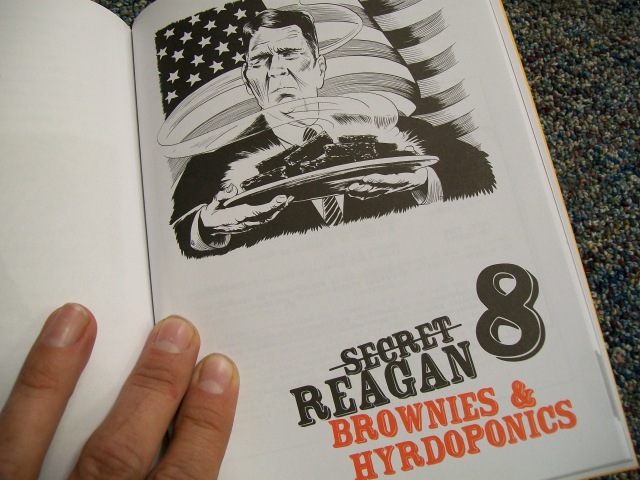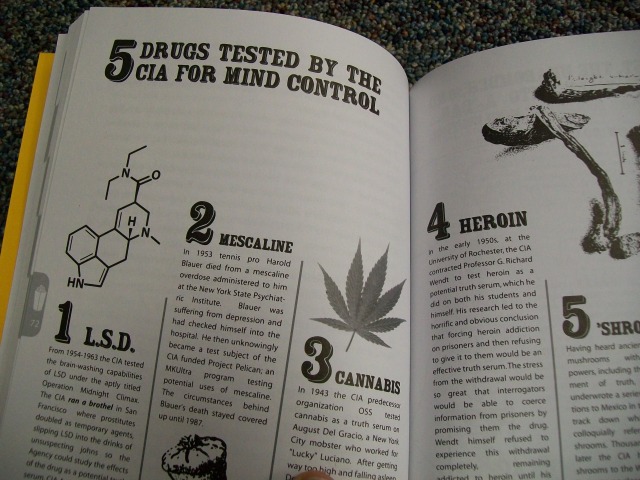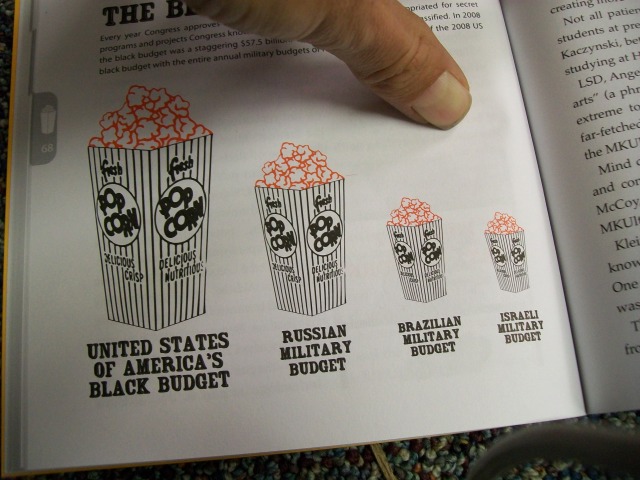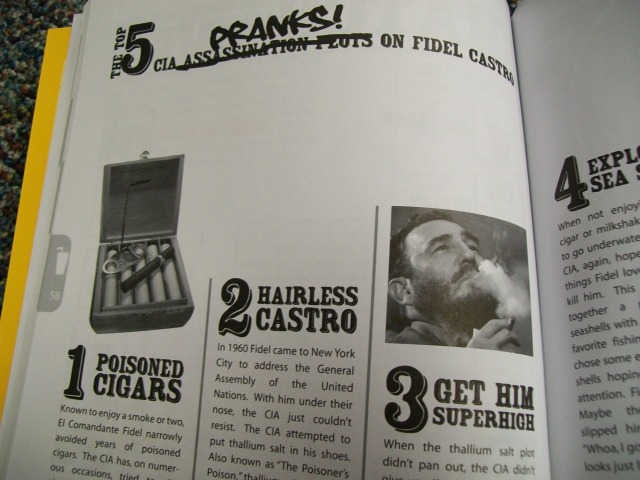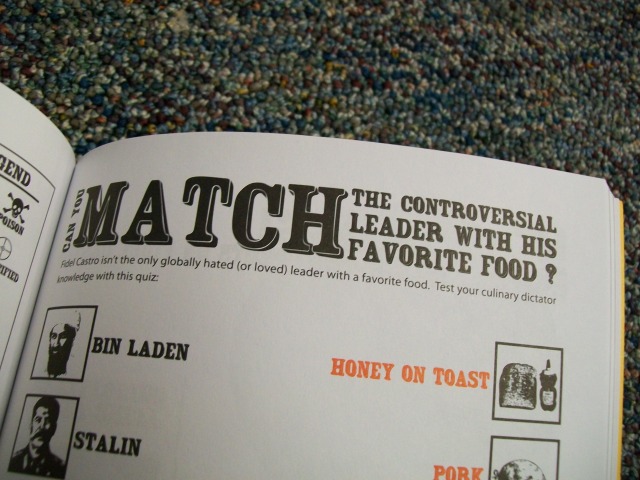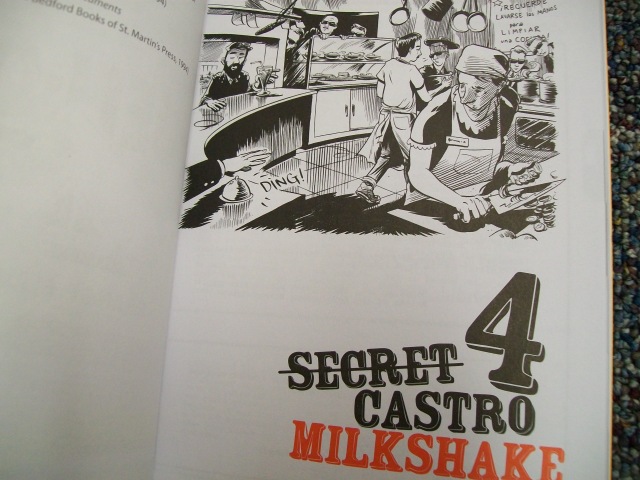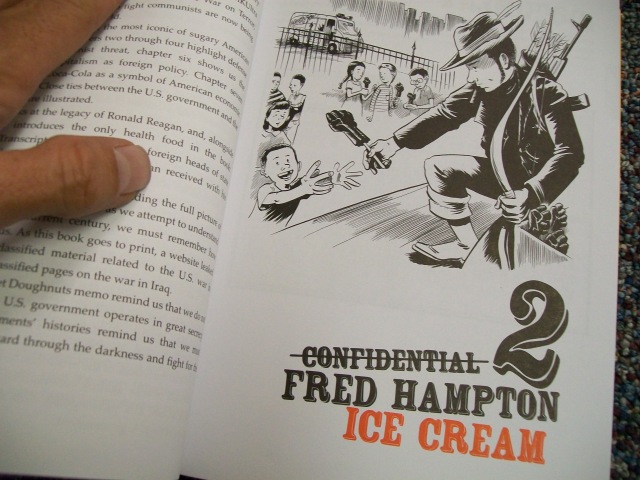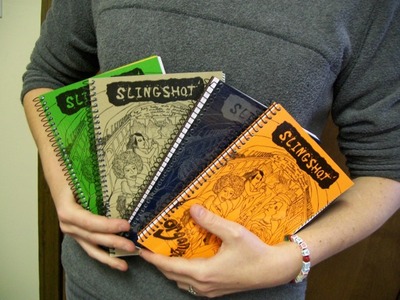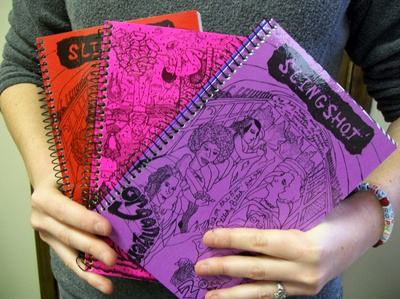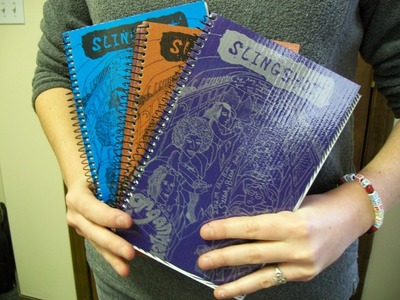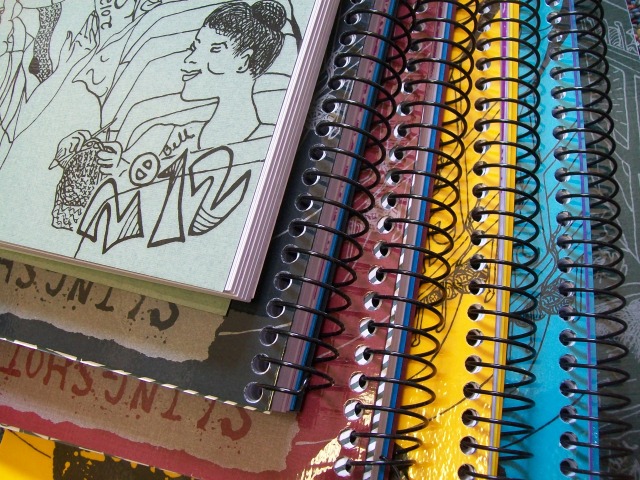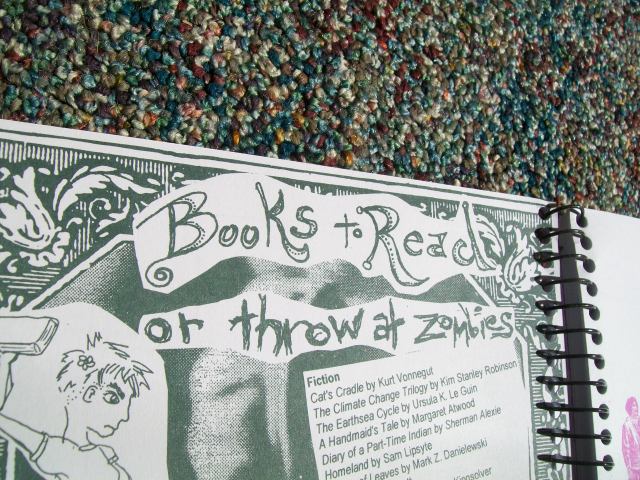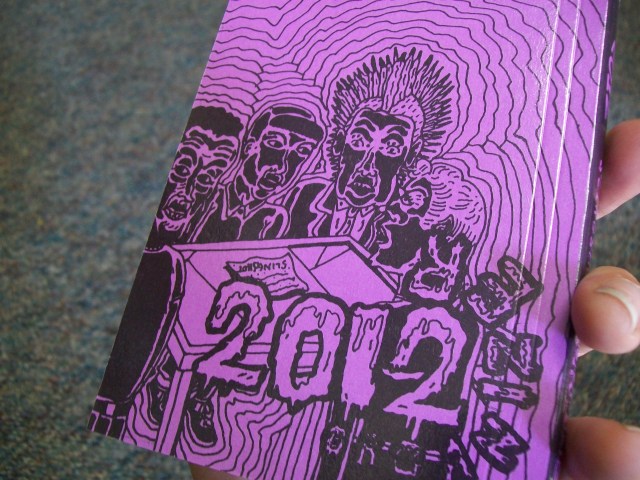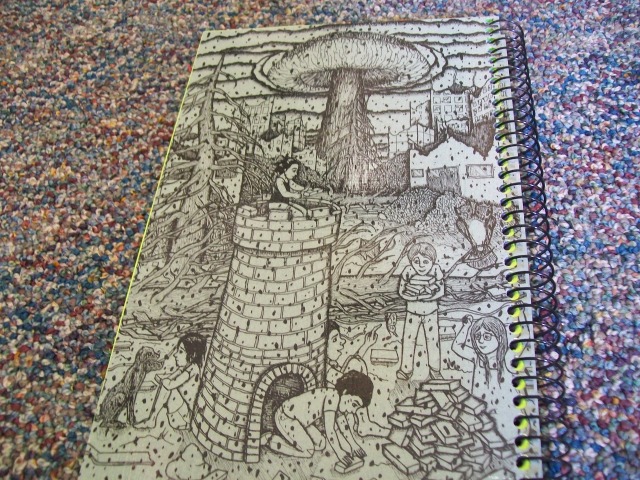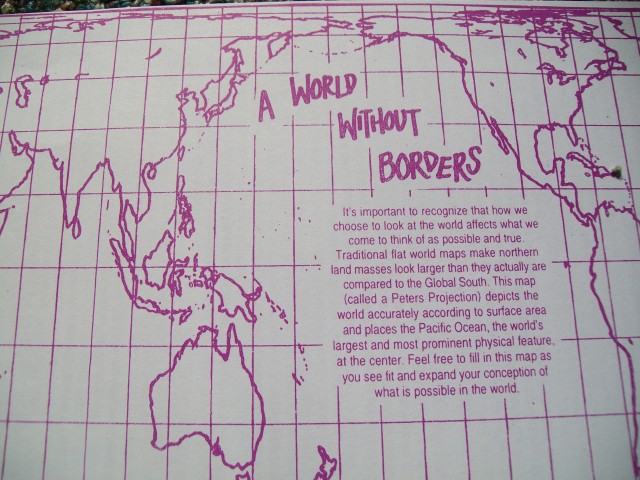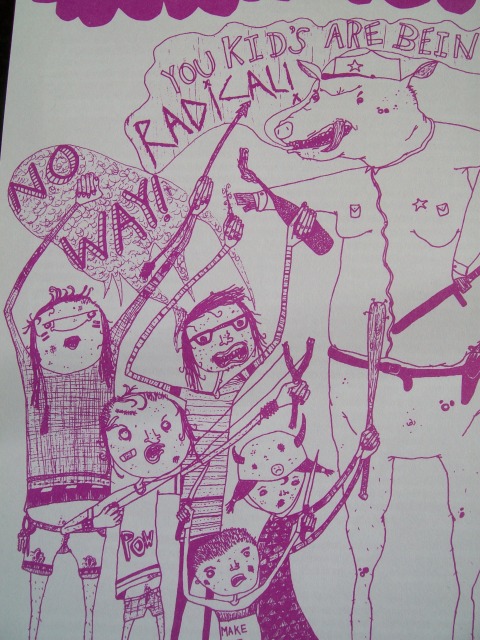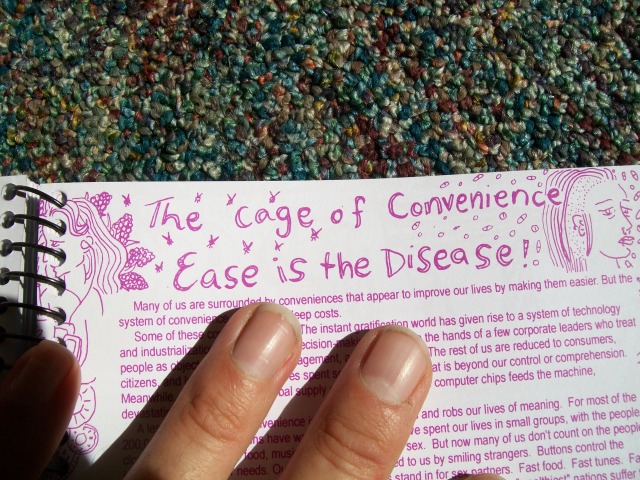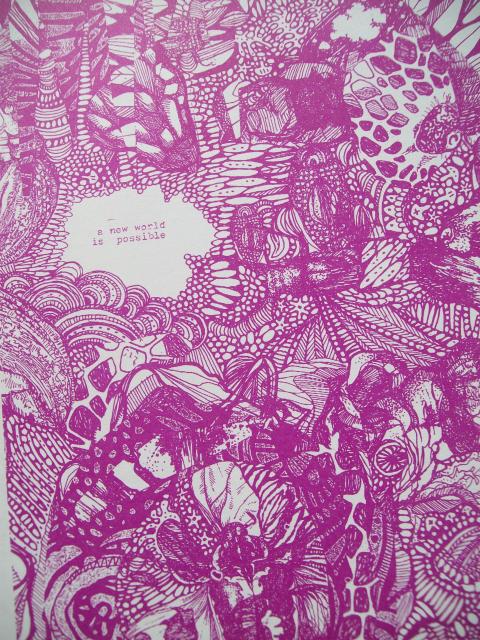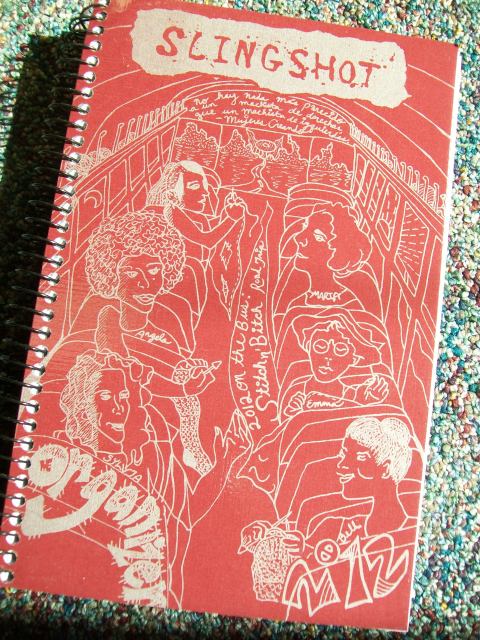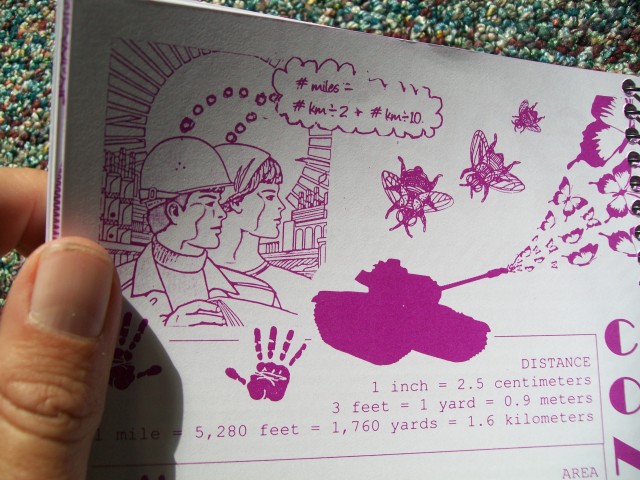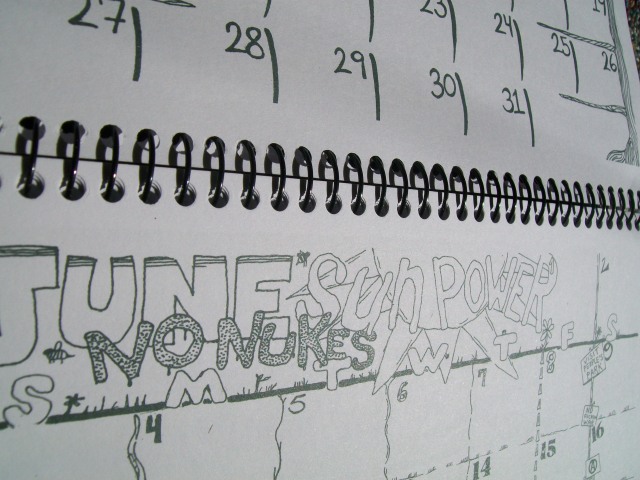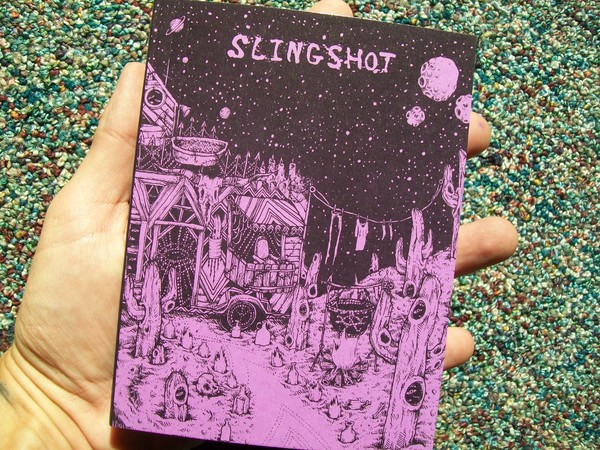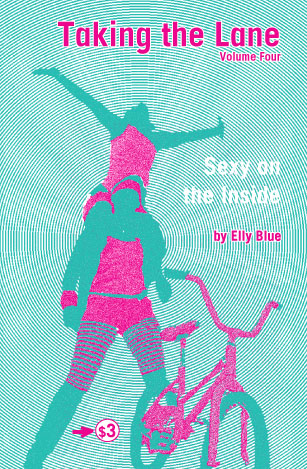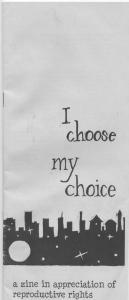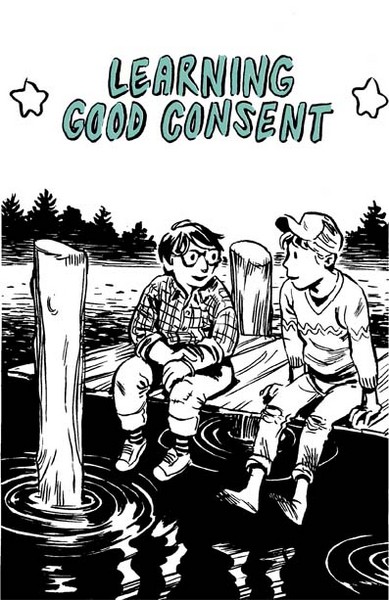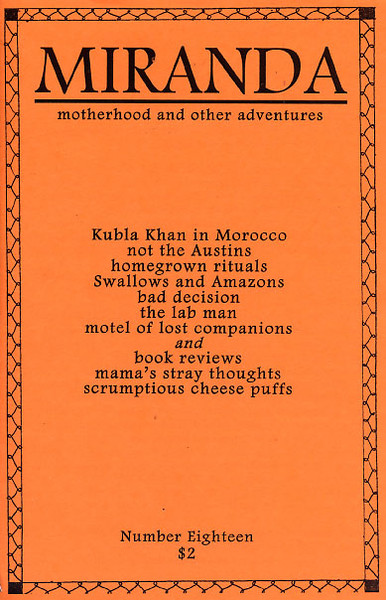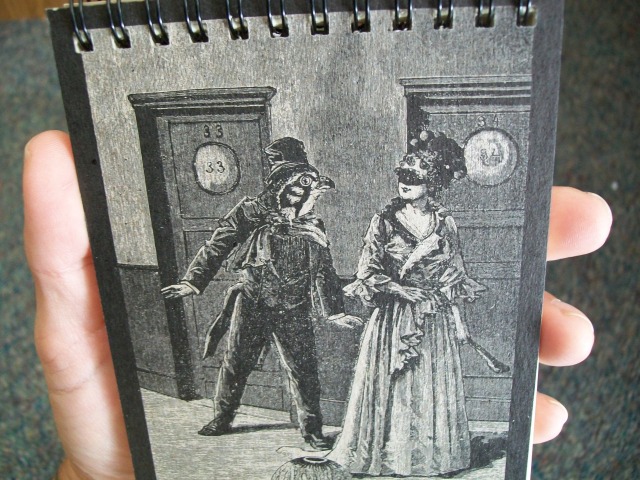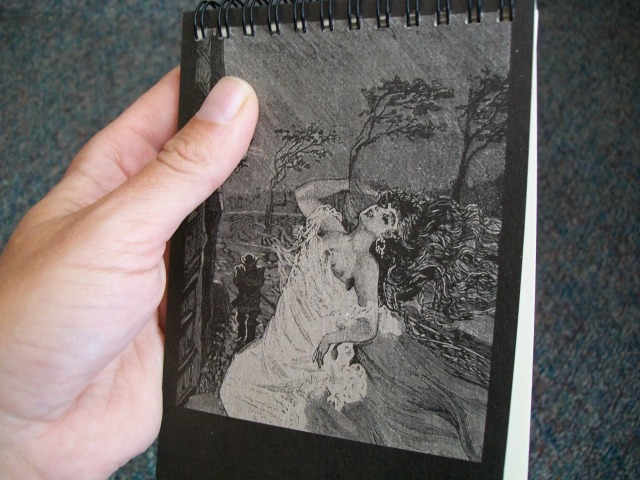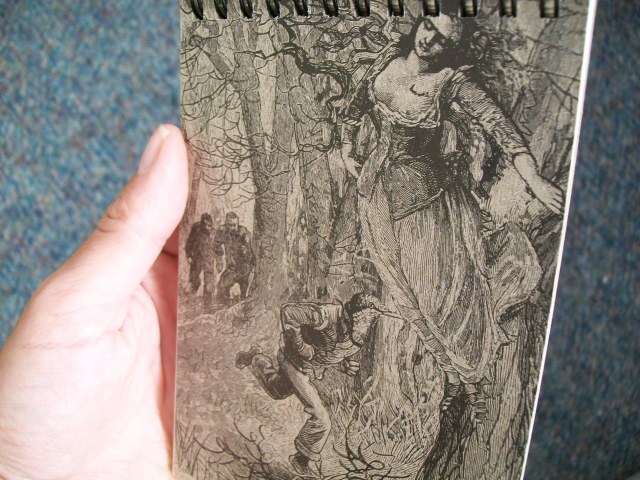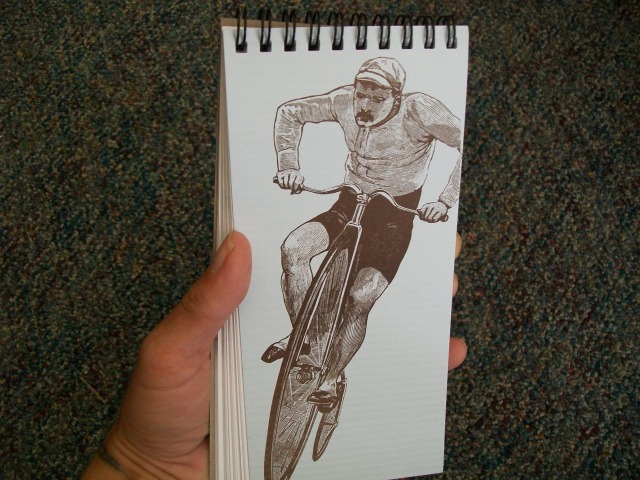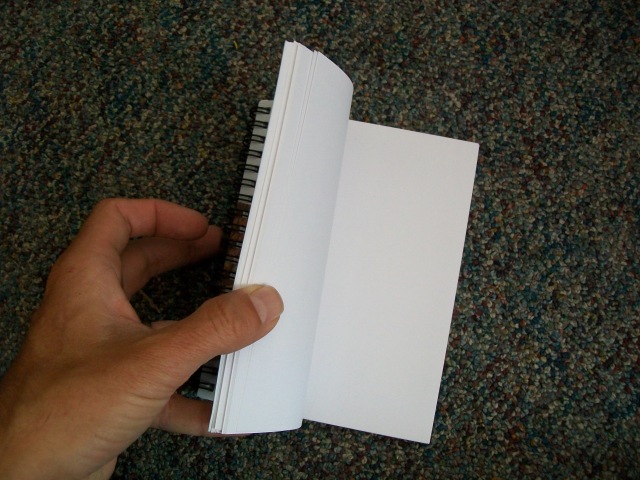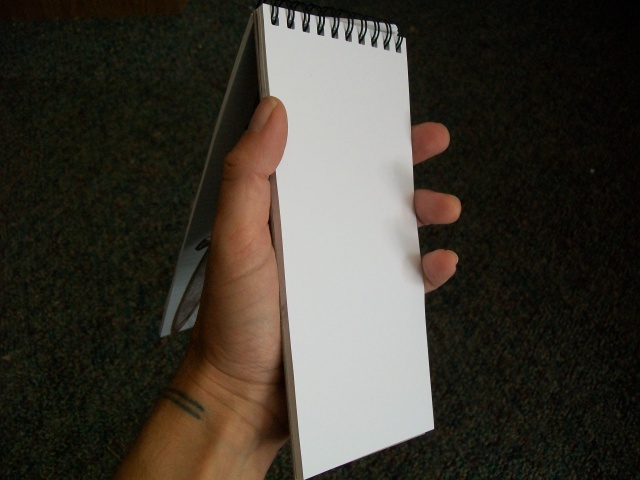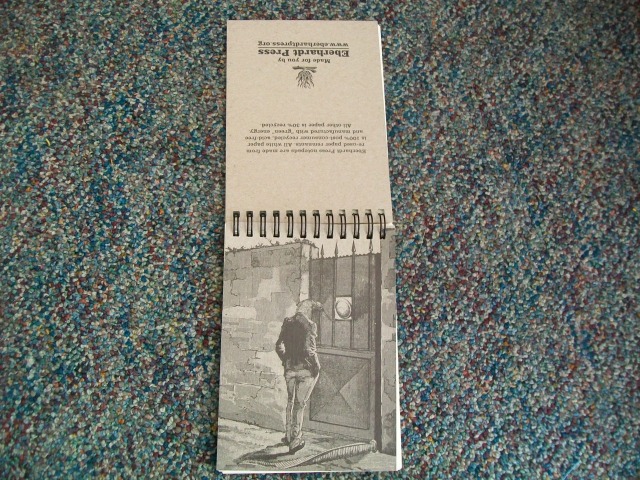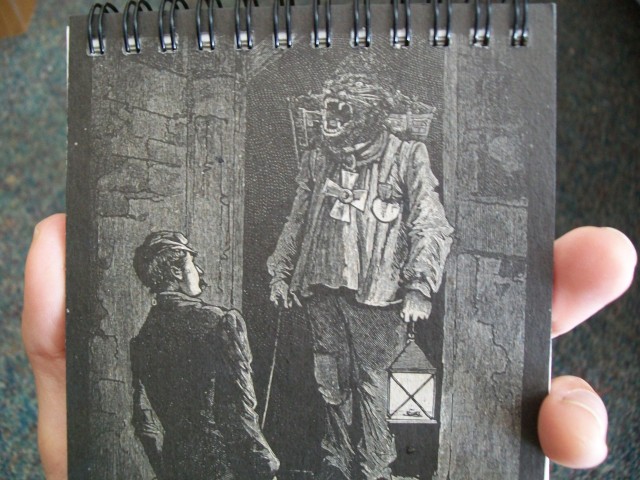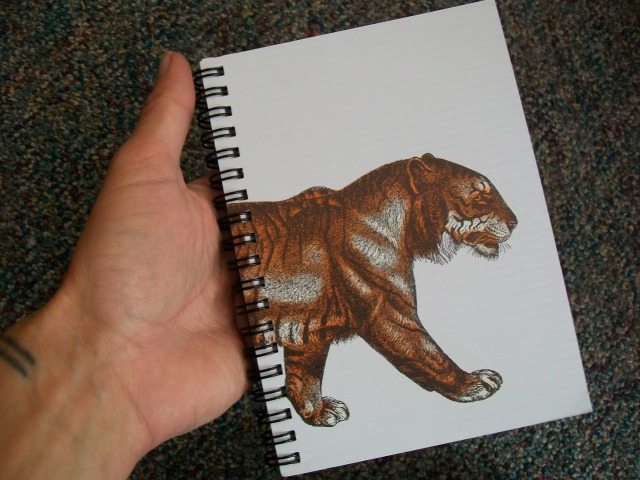If you’re looking for someone awesome and dependable to print your zine or book you should totally check out Eberhardt Press. Charles from Eberhardt does all our zine printing and the guy’s work is always solid. We chatted up Charles and got the scoop on what he does…
Q: For folks unfamiliar with Eberhardt, tell us what kind of services you offer…
A: Eberhardt Press is a small not-for-profit publishing house and print shop. No one here is actually named Eberhardt — the press was actually named for anarchist adventurer and writer Isabelle Eberhardt, an inspiring woman who passed away more than a century ago. We print books, zines, cards, bookmarks, posters, fliers, and anything else people need. We do offset printing exclusively, no digital, and no letterpress (even though we sure do love letterpress). However, Eberhardt Press shares a shop with two screen printers who can accommodate any screen printing needs people may have, so our building is kind of a one-stop shop for printing. Eberhardt Press also has a full suite of bindery tools. For job printing, we specialize in print runs between 200-2000 copies, and we are more than happy to work with people on custom or non-standard projects. Our goal is to serve the community by providing affordable, high-quality printing services in a way that is welcoming to people, because we believe that the literary and journalistic tradition of small independent publishing is more important than ever in the age of global digital media networks. (I will withhold my long-winded critique of the internet, you’ve probably heard it before.)
Q: How (and when) did Eberhardt get started?
A: Eberhardt Press rose from the ashes of a short-lived printing collective in Eugene, Oregon, that had gotten a hold of an old Chief 117 one-color press. The poor thing had been stripped down for parts and had a molleton dampening system, which is kind of like trying to print something with a pair of old socks wrapped around your water rollers. One piece at a time the press was restored to working order, and eventually was upgraded to a Kompac automatic dampening system. A tremendous amount of printing was put through that press–more than any one-color duplicator press should ever have to suffer. We’re talking millions and millions of impressions over a four or five year span. It was a great workhorse, but has since been retired.
The operation was renamed Eberhardt Press in 2004 and moved to Portland that summer, and piece by piece Eberhardt Press assembled its bindery operations, shifting slowly from time-consuming hand work to light machinery that was more suited to completing press runs of 500-2000 copies in a timely fashion. At some point I got a hold of an old Bind-O-Mat 200, this reeking, smoldering perfect binder with an exposed glue pot that definitely took its pound of flesh. What a beater–at the end, it kept catching on fire and electrocuting the crap out of me. Finally after choking out one last book job it went to the dumpster, which was really the best place for it to be.
Eberhardt Press has always been a publishing house as well as a job shop. Our publishing efforts focus on printed matter that is of interest to anarchists and political radicals, but the job shop is open to anyone. We print all sorts of stuff for all sorts of people, mostly small publishers, musicians, authors, poets, micro-businesses, activist groups and of course other anarchists. During the past couple of years most of the emphasis has been on job printing for reasons of survival, but we continue to publish and reprint original titles as resources and time allow.
Q: What kind of equipment do you use?
A: Eberhardt Press now has a 2-color Ryobi 3302 “Twin Tower” offset press, a true two color press with a double impression cylinder. At the risk of offending my pacifist friends, I often say this upgrade from the old press would be like Snoopy upgrading from his imaginary World War I biplane to an F-16. It enables much higher production capacity, much higher quality and much better registration, and makes four-color printing a reality, though it can still be tricky. Some of my Luddite friends are horrified by the fact that it is of recent enough vintage to have digital controls, but it’s an extremely well-engineered and built machine that I’ve been very impressed with (pardon the printer’s pun). All presses have their vulnerabilities and difficulties, but compared to that calamitous Chief 117 it’s usually a dream to operate the Ryobi.
Eberhardt Press also has all the basic tools of bindery–nothing extravagant, just a bunch of decent used equipment that was picked up here and there on the cheap. We recently moved up to an FC-10 collator, a high-capacity 10-bin machine that drastically reduces collating errors and greatly speeds up that aspect of the bindery process. We also have a Bindfast V perfect binding machine, which is a decent tabletop machine capable of binding around 50 books per hour. It does a reliable job, although it’s nothing fancy by any means. For wire binding, we have a manual 3:1 wire-0 binding machine, a great little machine for making notepads and other lay-flat books like cookbooks. For saddlestitch books, we have a Plockmatic bookletmaker in pretty good condition that staples and folds booklets in one shot. Then they go to the old Challenge Diamond paper cutter for trimming, an antique cutter more than a century old that was reportedly used to cut all the phone books for the Pacific Northwest during a previous lifetime. (I have no evidence for this claim, and I was told this by a professional clown, so take it with a grain of salt.)
All of the prepress is done with a typical diy CTP (Computer-To-Plate) system, specifically an iMac hooked up to an HP5100. The 5100 has a high-temperature fuser element that really bakes the toner onto the polyester plates that we print from, so that the image on the lithographic plate doesn’t deteriorate under the rigors of printing. There’s no RIP (Rapid Inline Processor) or anything like that–people just send in their PDFs or we scan their artwork, then impose it in a layout program and send it directly to plate with no intermediary process, no chemistry or anything like that. This not only reduces overhead, material costs, labor and toxicity, it also produces crisp, clean images for text and black & white line art. For grayscale photographs or screened artwork with subtle tones, this system is sometimes inadequate, but we can also go to our service bureau to have metal plates made if the tonal details in the artwork must be very precisely reproduced, or when hairline registration is required.
Eberhardt Press uses low-VOC press supplies to reduce toxicity, and we have an in-house ink recycling program as well for dealing with leftover ink. Customers can get a small discount if they choose “Old Smokey,” a smokey-hued black mix that is 100% re-used ink, or they can choose “Smokey 50”, which is a blacker mix consisting of 50% re-used ink and 50% fresh black ink. Ink waste is a significant contributor to the toxicity of a printing operation, so we try to waste absolutely as little as possible.
Q: Tell us about how your collaborative planner with Justseeds came about?
A: Oh geez, let me set the way-back machine to 2009… as I recall it, I had done some postcard printing for Justseeds, and Roger Peet and I had been throwing around some ideas for collaborative projects between Justseeds and Eberhardt Press. I think he first proposed the idea, and I was all for it right away. The first one, the 2010 Organizer, was really just an experiment to see if such a project was viable. Roger’s concept was to provide people with a simple, clean, functional datebook-style organizer for people to use, with some really beautiful but radical artwork. We only printed 500 of them and barely managed to get them finished before the end of February 2010, with considerable flaws in the printing (luckily no one ever seemed to notice). But people loved them, and we moved the whole print run. Last year we printed around 1100 of them and they came out really nicely. I’m down to my last three datebooks now from that press run, so this year we’re going to do a slightly larger print run and try to get them out there a little more widely, since they’ve been so well received so far. The 2012 edition should hopefully come out pretty nicely–the artwork from Justseeds is great as always and we’ve cleaned up the layout a bit. Presswise, it’s a real undertaking, involving around two dozen spot color inks and around 35,000 sheets of paper, but it’s a real joy to be able to work on a unique project like this.
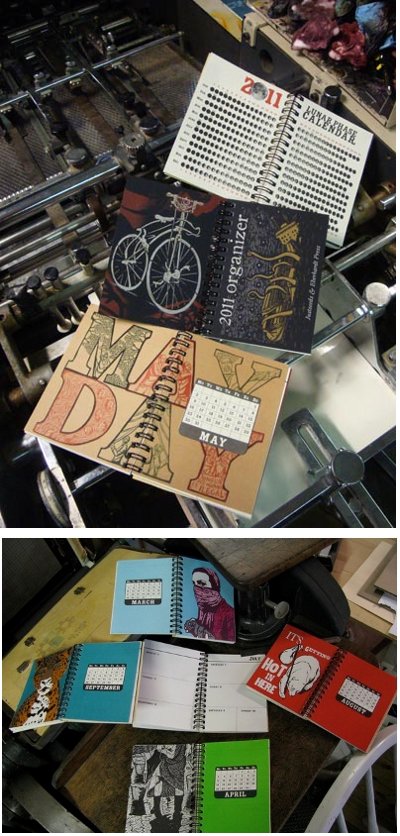
Q: What kinds of printing projects do you like to do most?
The ones that come out right! Ha ha. Seriously, in terms of job printing, I love printing standard-format zines of 64 pages or less, maybe with a two color cover. We can get them done quickly at very high quality, which always makes people happy. In terms of Eberhardt Press’ publishing efforts, the cards and ephemera are always really fun to put together–they aren’t labor intensive, they serve people’s practical needs and they’re beautiful. Pamphlets too–you can create them relatively quickly and distribute them relatively inexpensively. Whether it’s radical literature or simply a blank book for people to record their thoughts, its nice to know that the material you produce is being put to good use, so whatever the project is it’s always a privilege and an honor to be able to work on it.
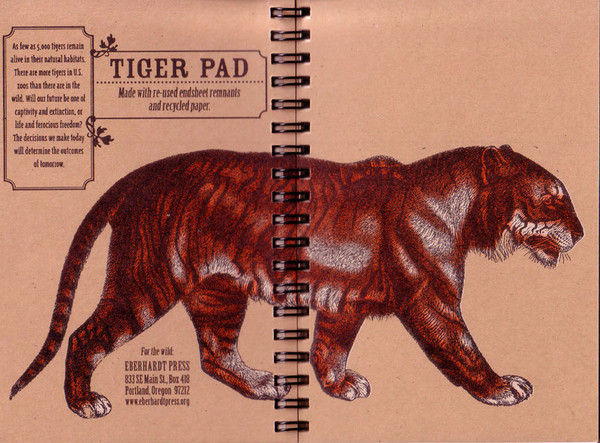 Q: What is your advice for someone who wants, say, 500 to 1000 copies of their zines and has a bit of money to have it printed?
Q: What is your advice for someone who wants, say, 500 to 1000 copies of their zines and has a bit of money to have it printed?
A: Well, everyone’s on a tight budget these days it seems, but there’s a lot you can do without spending a huge amount of money. One of my favorite things lately has been to add dustjackets to books and pamphlets that ordinarily would never be wrapped in such a thing. It doesn’t cost a huge sum to print a dustjacket, and it opens up a lot of creative possibilities. A dustjacket also makes a book seem special somehow, perhaps because we traditionally associate dustjackets with hardbound books. It conceals the staple binding on a zine’s cover. You can fold the center of a dustjacket to resemble a book spine, so that a staple & fold zine suddenly can sit spine-out on a bookshelf and still be identifiable, with the title printed on the spine–something that works especially well with a heavy text sheet or light cardstock sheet. You can print additional information or artwork on the inside flaps. Using nice endsheets or printing on the interior cover can also be a nice way to enhance the introduction of a printed work without adding tremendous expense. Of course, a lot of people see the dustjacket as nothing more than a glossy publisher’s sales pitch to be discarded by a worthy reader, something that gets in the way. But if you design it well and use nice paper or great artwork, it can be an inexpensive way to really make a project stand out. If the dustjacket seems like too much, consider a simple paper band–it’s less expensive and discardable, but it gives you some options for making your project stand out on a shelf.
On the issue of budgets and printing, lately one very problematic issue has been the steep increase in prices for recycled paper pulp and the resulting closure of so many mills specializing in recycled paper, such as Gray’s Harbor in Washington and Blue Heron near Portland, to name just two. The paper and printing industry is under crushing pressure right now, and I fear that due to the economics of trade globalization, recycled paper will more and more become a luxury that expensive projects may boast of, but which becomes less accessible to the average individual because of excessively high cost. Most non-recycled sheets these days still contain 10-30% recycled fiber content and are FSC-certified and all this sort of thing, but finding affordable 100% post-consumer recycled paper for general use in a variety of weights has rather suddenly become more difficult and about twice as expensive. Of course, if you’re just printing on 20# copy paper, there are still plenty of options, at least for now. And more and more tree-free papers are becoming available, although “tree-free” does not always mean “sustainable”.
Regardless, I think the best way to invest in your zine is to use the best materials possible. For anything under 36 pages, I’d go with a 70# text sheet; it feels so much more substantial than a plain 20# sheet of copy paper, and has much better opacity (less show-through from the other side of the sheet). For anything from around 36-80 pages, a 60# text sheet is usually suitable. Also, a nice cover stock can make all the difference. Neenah Environment has a very nice selection of 100% recycled cover stocks, and I like the Neenah Sundance Felt a lot also. We use Neenah Classic Laid for a lot of covers and cards also. There’s also the Mohawk Loop series, which has a lot of recycled options, but usually you either have to pay an awful lot per sheet or you have to order unbroken cartons of parent sheets, which is inconvenient. But use the best materials you can afford.
Also, the method of printing is key to getting your best deal. For small quantities, say 50-150 books, I have to admit that print-on-demand is probably the most cost effective option. Your cost per book is high, but there’s not a less expensive way to print them. Of course, if you rub the page with your thumb the toner will come off, but it’s still your most economical option for very small editions. Offset printing like we do at Eberhardt Press is more suited to longer press runs–the longer, the better. The smallest press run I recommend for offset printing here at Eberhardt Press is 250 books, because the shorter the press run is, the higher the setup costs will increase your cost per book. This is true of all offset print shops, although most commercial shop won’t even touch a run of fewer than 500-1,000 books with an offset press. Eberhardt Press specializes in print runs of 500-2000, so we’ll give you the best price possible in the narrow void that still exists between print on demand and commercial offset printing.
Q: Finally, where can people get in touch to have printing jobs quoted?
Folks can email printing@eberhardtpress.org to get in contact, or see eberhardtpress.org for more information.




